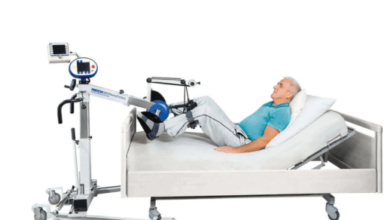Where is the Cuboid Bone Located? Unveiling Its Role and Importance
The human body is a marvel of intricate design, with each bone serving a specific purpose. One such bone that often goes unnoticed but plays a crucial role in our mobility is the cuboid bone. Nestled within the intricate network of our foot’s architecture, the cuboid bone might be small, but its significance is immense.
Understanding the Cuboid Bone
When we talk about the cuboid bone, we’re referring to a cube-shaped bone situated on the lateral side of the foot, specifically within the midfoot region. This small bone forms a vital connection between the foot and the ankle, facilitating various movements that we often take for granted.
The Anatomy of the Foot: A Brief Overview
The human foot is a masterpiece of biomechanics, comprising numerous bones, muscles, ligaments, and tendons. The cuboid bone, along with the other tarsal bones, forms the foundation of this intricate structure. This bone interacts with neighboring bones, allowing us to maintain balance and stability.
The Cuboid Bone: Structure and Function
The cuboid bone might be diminutive in size, but its role in weight-bearing and locomotion is immense. It acts as a pivotal point of support and plays a crucial role in maintaining the arch of the foot. This bone also provides an anchor for tendons and ligaments that contribute to the foot’s flexibility and movement range.
Common Issues with the Cuboid Bone
As with any bone in our body, the cuboid bone is susceptible to various issues. One common problem is “cuboid syndrome,” which occurs when the bone becomes dislocated or misaligned. This can result in pain, discomfort, and limited mobility.
Diagnosing Cuboid Syndrome
Identifying cuboid syndrome involves a thorough examination of symptoms, including pain along the lateral foot, difficulty walking or bearing weight, and potential swelling. Healthcare professionals perform physical tests to diagnose the condition accurately.
Treating Cuboid-Related Problems
Treating cuboid-related issues often involves a multi-faceted approach. Rest, ice, compression, and elevation (RICE) are initial steps to alleviate discomfort. Chiropractic adjustments and physical therapy may also be recommended to realign the bone properly.
The Role of Proper Footwear
Wearing appropriate footwear is paramount for maintaining healthy feet and supporting the cuboid bone. Shoes with good arch support and cushioning can prevent many foot-related problems, including cuboid misalignment.
Maintaining Healthy Feet: Tips for Everyone
Caring for your feet goes beyond just addressing issues. Regularly washing and drying your feet, trimming nails properly, and moisturizing can contribute to foot health. Additionally, performing simple exercises and stretches can enhance foot strength and flexibility.
The Significance of Foot Health
Our feet are the foundation of our body’s movement. Ignoring foot health can lead to cascading issues affecting the ankles, knees, hips, and even the spine. Prioritizing foot health can lead to better overall mobility and quality of life.
Debunking Myths About Foot Care
There are many misconceptions about foot care that can hinder our understanding of proper foot health. Dispelling these myths can lead to better care practices and informed decisions.
The Interplay of Cuboid Bone and Other Bones
The cuboid bone doesn’t work in isolation; it collaborates with neighboring bones to ensure harmonious movement. Understanding this interplay can deepen our appreciation for the complexity of the human body.
Exercises for Stronger Feet and Ankles
Engaging in exercises that target foot and ankle strength can significantly contribute to overall foot health. Simple activities like toe curls, marble pickups, and resistance band exercises can work wonders.
When to Seek Professional Help
Persistent foot pain or discomfort should never be ignored. Consulting a healthcare professional can help diagnose underlying issues, whether they involve the cuboid bone or other components of the foot.
Preventive Measures: Avoiding Cuboid-Related Problems
Prevention is always better than cure. Practicing good posture, wearing appropriate footwear, and maintaining a healthy weight can all contribute to reducing the risk of cuboid-related problems.
Caring for Your Foundation of Mobility
In the grand symphony of our body’s movements, the cuboid bone plays a humble yet indispensable role. A little bone that carries significant responsibility, the cuboid bone reminds us to appreciate the intricacies of our anatomy and to prioritize the health of our foundation of mobility.



